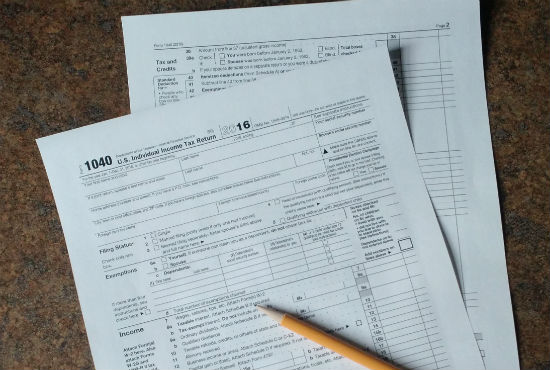By Justin Fundalinski, MBA | December 20, 2016

Now that the election is over we have to start considering what could happen as President-elect Donald Trump implements (or tries to implement) the center piece of his economic plans – tax reduction. Please note that this article is based on Trump’s statements during his campaign, is focused on individual taxes (not business), and many items are likely to change.
Income Taxes:
Tax brackets may be consolidated into only three brackets compared to the current seven brackets. We cannot give Trump credit for this concept as it mirrors the House GOP’s Tax Reform Blueprint released in June of 2016. Notably, while the Blueprint does specify the income levels that fall within each bracket, Trump’s plan does not (yet) — so how this impacts tax payers is really unknown. However, based on my review of the Tax Reform Blueprint it could mean marginally lower tax rates for those with taxable income up to about $230k with the margin getting larger for those with income greater than this (assuming that the standard deduction is also increased – as proposed).
The standard deduction is also supposed to be increased to $15,000 for single individuals and $30,000 those married filing jointly. Comparing this to the assumed 2017 respective figures of $6,350 and $12,700 this increased deduction will decrease the amount of taxable income as well as reduced the need for many filers to itemize their deductions.
Estate and Gift Taxes:
Trump proposed to repeal the federal estate and gift tax. Currently, there is a credit in place that essentially negates any estate and gift taxes unless the amount transferred exceeds $5.49 million (in 2017) or double that for married couples. Clearly this repeal only impacts those with estates exceeding $5.49 million. This is likely going to get a lot of opposition from Democrats as they have discussed increasing estate taxation as well as eliminating basis step-ups inherited assets.
Alternative Minimum Tax:
Trump also proposed to eliminate the alternative minimum tax (AMT). Currently the AMT is a secondary method of calculating your taxes. Depending which method causes the higher tax liability is the method used to calculate your taxes. According to the tax policy center, people with incomes less than $200,000 are generally not affected by AMT, while those with incomes between $200k and $1MM take the brunt of the tax.
Childcare Benefits:
A few proposals were made to help parents with child care expenses. First there are proposed rebates to lower-income families (assumedly those who cannot afford child care) that would be implemented through the Earned Income Tax Credit to help pay for some child care. Second, there is a deduction to taxable income for those who can afford child care. It is assumed these reforms would replace the current childcare tax credit which is geared strictly toward those who owe tax as well as those who must use child care in order to go to work.
In my opinion, it appears that the tax benefits for child care will benefit a greater quantity people due to the lower restrictions under Trump’s proposal. However, those who are used to the current tax credit may end up paying more in taxes depending on the income levels, child care expenses and the number of children they have.
Affordable Care Act
While we really have no idea how it will all shake out if and when Trump and congress “repeals and replaces” the Affordable Care Act (ACA, ObamaCare) we do know one thing Trump has harped on several times. The additional 3.8% Net Investment Income (NII) Tax that is imposed on passive income and capital gains (when income levels exceed certain thresholds) is on the chopping block. The NII was brought about as a Medicare surtax under the ACA and affects those with a modified adjusted gross income greater than $200k if filing single and $250k if filing married.
In Conclusion
While tax reform appears to be a top priority, rhetoric only goes so far. Since simple majority votes in Senate can only be taken once the discussion/debate around a bill is complete, it is quite possible opposing parties can and will filibuster. The only way to overcome this is to obtain 60 votes in congress and the republican majority is not that strong. As with everything in congress there are concessions to be made. You give me this, I’ll give you that. Time will tell what actually happens – stay tuned.





